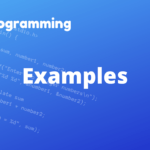In the world of version control systems, Git has emerged as a powerful tool for managing code collaboration and tracking changes. “git diff” is one of the prominent git commands which plays a crucial role in analyzing code differences between commits, branches, or even individual files.
Contents
This article explores the various functionalities of git diff, providing practical examples and clear explanations along the way.
Also read: Git Commands
Understanding git diff
Overview
Git diff allows developers to view and analyze changes made to files within a Git repository. It provides a detailed breakdown of differences, showcasing additions, deletions, and modifications. This command is invaluable for understanding how code has evolved over time and is an essential aspect of Git’s core functionality.
Use cases
- Determining what changes are pending for staging or commit.
- Reviewing code changes before integrating branches.
- Identifying differences between different commits or branches.
- Analyzing the impact of changes made by other developers.
Basic usage of git diff
Diff between the working directory and staging area
The most common usage of git diff is to compare the changes between the working directory and the staging area. This command allows developers to assess the state of their code and what will be committed. To use git diff in this context, simply execute the following command:
git diff
Diff between the staging area and last commit
To compare the changes between the staging area and the last commit, use the following command:
git diff --staged
Diff between two commits
To compare changes between specific commits, you can provide their respective commit hashes to git diff:
git diff <commit-hash-1> <commit-hash-2>
Diff between branches
To analyze the differences between two branches, the git diff command can come in handy. For instance, to compare the “develop” branch with the “master” branch, execute:
git diff develop master
Advanced options
Ignoring whitespace changes
Git diff can exclude whitespace changes, enabling developers to focus solely on real code modifications. Using the --ignore-all-space option, git diff can be invoked as follows:
git diff --ignore-all-space
Comparing specific file types
Git diff can be limited to specific file types, particularly useful for developers focusing on specific languages or file formats. Provide the file extension using the `– ‘*.extension’` option:
git diff -- '*.js'
Filtering diff output
To narrow down the diff output to specific files or directories, git diff provides the -- '**/<directory_or_file>' option. For example:
git diff -- '**/src/'
Customizing git diff format
By default, git diff provides a unified diff format. However, you can customize the output format using the --output option. For instance:
git diff --output=diff.txt
Using diff tools with git
Configuring difftool
Git allows the integration of external diff tools to provide rich, visual representations of code changes. Configure your preferred diff tool using the following command:
git config --global diff.tool <tool-name>
Performing visual diffs
Once difftool is configured, execute the following command to perform a visual diff:
git difftool
Utilizing third-party diff tools
Git seamlessly integrates with popular third-party diff tools like Beyond Compare, KDiff3, and more. Install the desired diff tool and update Git’s configuration accordingly. For example:
git config --global difftool.beyondcompare.path /usr/bin/bcompare
git config --global difftool.beyondcompare.cmd "bcompare \$LOCAL \$REMOTE"
Conclusion
Git diff is a powerful command that enables developers to examine code changes at various levels, whether it’s between commits, branches, or even individual files.
Understanding how to use git diff effectively allows developers to gain deeper insights into their codebase, detect potential issues, facilitate code reviews, and improve collaboration within development teams.
By leveraging the functionality of git diff and exploring its advanced options, developers can make the most of Git’s powerful version control capabilities.
In conclusion, git diff empowers developers to track and analyze code changes, ultimately contributing to more efficient and effective software development.
Also, check our Git Commands category for more information on Git commands.
Follow us on Facebook, YouTube, Instagram, and Twitter for more exciting content and the latest updates.


